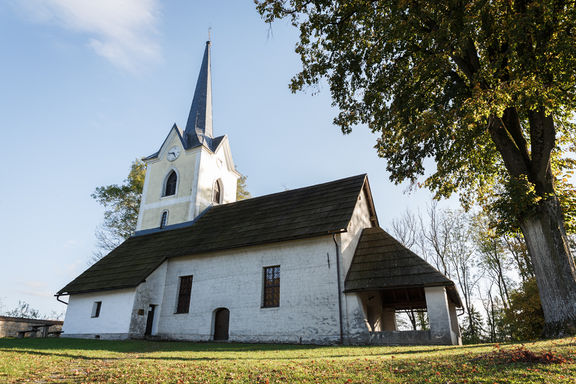Difference between revisions of "Church of St George in Legen"
(fixed links) |
(g->G) |
||
| Line 7: | Line 7: | ||
| localname = Cerkev svetega Jurija | | localname = Cerkev svetega Jurija | ||
| street = Legen | | street = Legen | ||
| − | | town = SI-2380 Slovenj | + | | town = SI-2380 Slovenj Gradec |
| telephone = 386 (0) 2 884 2055 | | telephone = 386 (0) 2 884 2055 | ||
| fax = 386 (0) 2 884 2055 | | fax = 386 (0) 2 884 2055 | ||
Revision as of 15:42, 6 September 2011
History
The Church of St George was already known as a church with a Romanesque plan dating to the second half of the 13th century. As such, it preserved more significant architectural building phases and renovations. After the earthquake in the 17th century the church was partly rebuilt in Baroque stayle.
During the restoration of the worn-out pavement in 1993, archaeologists of the Institute for the Protection of Cultural Heritage of Slovenia, Maribor Regional Office came quite unexpectedly upon the ruinous remains of older sacral objects and graves.
Finds
Excavation of the earlier construction phase revealed the foundations of a small early medieval (9th-10th century) church with one nave and an inscribed (hidden) apse which had burnt down. On the southern and eastern side of the church were 26 old-Slovene graves from the same period.
Objects found in the graves included numerous small bronze shaded hoops with either a single thickened part at the end or an 'S' snare. There were also two round bronze ornamental clasps. One of special interest was decorated with a peacock, an old Christian symbol of immortality.
The discovered archaeological remains are glass-covered with a heated, accessible surface and air-conditioning, a masterpiece of preservation by architect Milan Kovač in 1994. He is an experienced specialist with a history of finding technical solutions to similar problems who has worked on archaeological monuments in Etruria, Egypt and China.
Awards
In 1996 Mira Strmčnik received high recognition from the Archaeological Society of Slovenia for supervision of the entire project connected with the Church of St George, especially for the management of the excavations.



